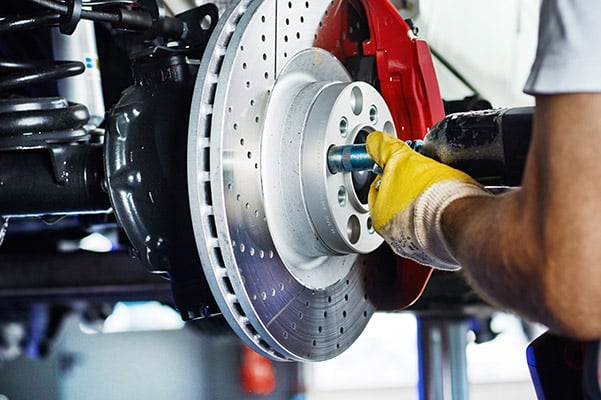
How do brakes function?
For your brakes to function in full working order, your braking systems relies on every connected brake part.
By pressing down on the brake pedal, the cylinder that delivers brake fluid to the callipers is activated and furthermore, you then engage your brake pads. The brake pads then apply pressure to the brake discs which creates the friction that is needed for your car to stop.
How often should I have my brakes inspected?
If possible, we advise a yearly inspection on your brake system to ensure your brakes are in full working order and if necessary, to repair any faults before they become a bigger problem. However, if any brake warning lights appear on your dashboard, then an immediate inspection may be required to find out the cause to the issue.
What’s included in a brake inspection?
In a brake inspection, many parts of the brake will be inspected. These include:
Brake pads
Callipers
Brake discs
Wheel cylinders
Any springs and adjusters
Hoses
Parking brake cables
Fluid
Wheel bearings
Learn more about the different parts of a brake system
Brake pads: the part that makes contact with the brake discs to allow your car to cause enough friction to stop.
Brake discs: in the majority of cases a individual brake disc is connected to all four tyres of your vehicle. For the car to stop, each brake disc must stop spinning and it does this by the friction created by the brake pads.
Callipers: brake callipers apply pressure and then, activate the brake pads to create contact with the brake discs. In order for the callipers to function correctly, they require brake fluid.
Hose: the brake hose is used to transport the brake fluid to each calliper. When you press on the pedal, the fluid will travel to the callipers and the brakes will start working.

